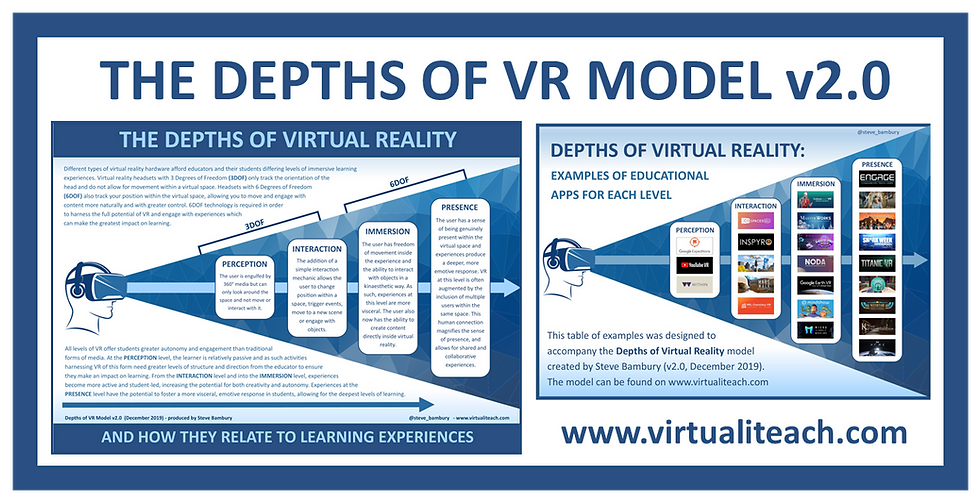
This last week has been a busy one for me. Not only did I finally find the time to relaunch the site (and produce half a dozen new pieces of content for it) but I was part of a G20 event hosting AR and VR demos and then delivering the closing keynote sharing insights on VR in Education.
As I mentioned in the Rise of the Virtual Phoenix article, announcing the site relaunch, I had to sacrifice some of the old site structure in order to accommodate the changes to the Wix blog tool which the site was essentially built around. Losing the Guest Articles and ViveEDU sections did bother me but I knew the content was still available in amongst the main pool of blog posts. The same was true for my AR/VR Theory section, but with one major exception – the ORIGINAL piece of content here on VirtualiTeach and still the most widely shared and best received piece of content I had ever produced: my Model for the Depths of VR from March 2017 -
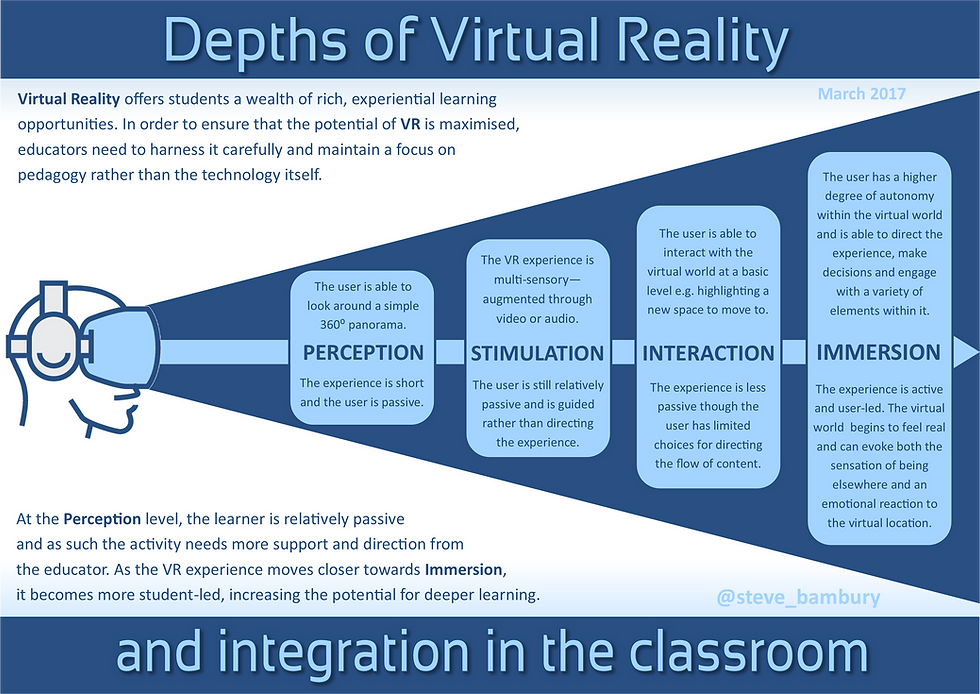
This was never part of the blog as in the early days of the site, before there even was a Theory section, the model WAS its own section. I knew I couldn’t lose it… but then I looked at it for the first time in well over a year and I realised that it was seriously in need of an update. My understanding of VR as a medium has grown so much in the last two years, both through my own work and the amazing work of people within the industry who inspire me on a daily basis.
So I decided to rip it apart and put it back together and then debut it at the G20 event as a part of my keynote. I’ll share the new 2.0 model below and then break down some of the changes and also provide a second graphic with some examples of apps at each level.
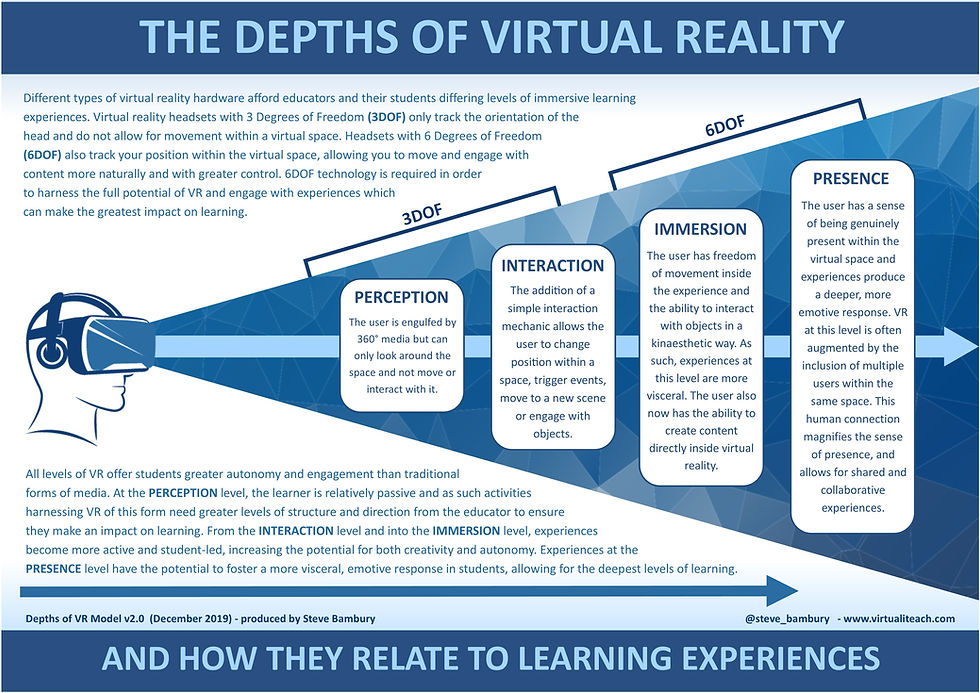
The first thing that became clear to me was that I needed to change the actual levels of the model. In particular the second level STIMULATION stood out to me as too small a step from the initial level PERCEPTION. So I removed this and was now left with a 3-step model which basically looked like:
PERCEPTION (simple 360° media) INTERACTION (adding a simple interaction mechanic – but still 3DOF) IMMERSION (6DOF, room-scale VR experiences)
At this point my attention switched to the other end of the table. Having two levels that essentially represented 3DOF experiences and then just one for ALL possible 6DOF experiences seemed wrong. It was unbalanced. Simply put, 6DOF experiences ARE true virtual reality and so I focused on these and explored the possibility of teasing this single level apart into two separate ones – if it made sense.
Ultimately I felt that it did make sense.
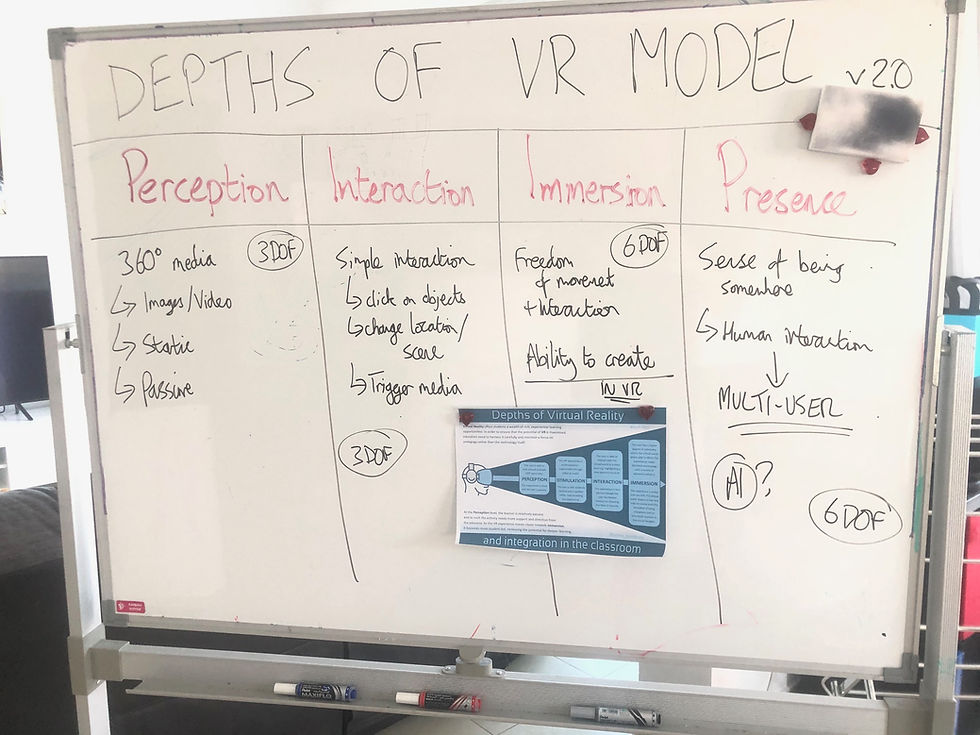
Not all 6DOF experiences are created equal. Some are more guided and lack freedom of interaction. Others are more like tools within a room-scale space. Then there are those experiences which truly transport you to a virtual space. The experiences which make you forget that you are in a classroom or a living room and convince your brain that you are underwater, on the Moon, in Ancient Rome or walking a plank at the top of a high rise tower. You also have the multi-user experiences where the communication and connection with others exacerbates the sense of “being there” even more.
These are the most powerful experiences – the ones that create a genuine, emotive and visceral reaction in the user. And with that realisation, it became obvious what my new fourth level was – PRESENCE.
From here, rebuilding the graphic was fairly straight forward using this new four-step model of PERCEPTION – INTERACTION – IMMERSION – PRESENCE. I shared initial drafts with some colleagues within the VR education community and feedback was very good with a couple of people suggesting that I include examples of apps at each level. I was a little hesitant to do this as I didn’t wasn’t app names/logos on my graphic (and didn’t have the space anyway) so I decided to curate some examples on a separate graphic which you can find below:
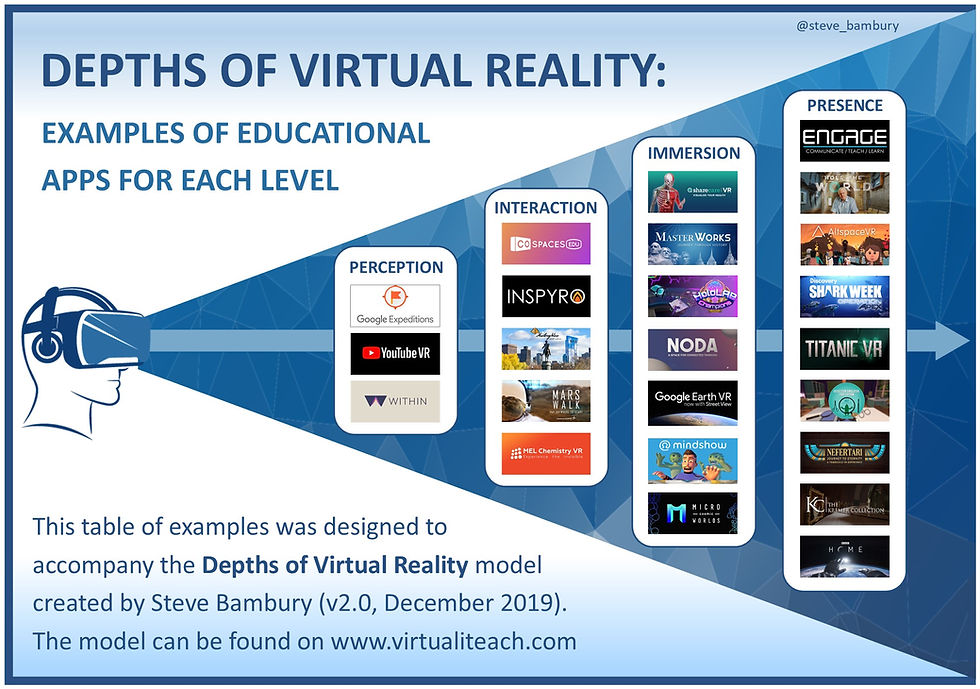
So there it is folks. I hope you like this update to the graphic and please do feel free to share it on social media and use it in your own presentations or studies. Will this be the final version of the model? Hard to say. I’ll take another look at it in 2021 maybe…

_edited.png)